
Sunday, February 4th, 2001
Woke up on my bed of fir boughs surrounded by other sleeping bodies. There are seven of us lying in a circle inside the round white tent. The only part of the tent floor not covered with prone bodies is the area next to the door and the small rectangular woodstove. The stove sits on spruce log runners on the frozen ground two and a half feet below our bed level. We sleep on a ten-inch mattress of fir boughs that rest on two feet of packed snow. It is zero degrees outside now, but well above freezing in the tent. Ray, who was lying to my right, gets up and stokes the stove. The fire comes to life and the heat soon requires us to get out of our sleeping bags.
Tim fills the coffee pot with water and fresh grounds. Adam measures water and seven grain cereal into a two-gallon stainless steel pot and sets it on the stove near the coffee. Others are sitting up, pulling on long underwear, pants, and shirts. Big Tom asks Ray questions about teaching heightened awareness to students. Their conversation soon becomes a group discussion that continues on into breakfast. After breakfast I do the dishes in a large black pot filled with hot water and a little homemade soap. The discussion has evolved to an exchange of information about knot tying. To illustrate the knots we take turns tying various knots onto the fir center pole of our tent with lengths of quarter inch nylon cordage. This morning’s knots are the prusik, the tautline hitch, and the clove hitch. We ask Ray to show us the puckering stitch for sewing moccasins. As the leather is passed around and each of us sews a number of puckers, he describes the basic pattern he uses for summer moccasins. While Tim is sewing a pucker Adam shows me how the thumb is cut out and sewn in his large homemade leather mittens. Today is a slow day, and despite the beckoning sun outside, we linger in the warmth of the stove, demonstrating various skills, and discussing the ways native peoples in this area lived comfortably in the woods.
By noontime I feel the need to go out for a wander. I put on a couple of sweaters, lace up my mukluks, and push through the flap that serves as the tent door. I slide into my snowshoes, grab my axe from the limb it is hanging on, and start walking north up the trail. At first the going is easy because I’m walking on snow neatly packed down from previous forays. I approach a hole in the snow about eight inches in diameter and a foot deep. There is a shallow trench that ends a foot and a half from the hole. At the end of the trench there is a tunnel under the snow to the hole. This is where yesterday morning a partridge had burst up out of the snow as I approached, madly beating the air with frantic wings while letting out that little squeaking noise partridges make when startled, until it had landed safely in the plumage of a spruce thirty feet away. It had spent the night sleeping in it’s cozy snow burrow, and when I approached too closely, it answered the alarm clock of my footfalls, and shot out of bed with a burst that would make any morning person envious. I can see gentle brush marks on the edges of the hole where its wing tips brushed the surface of the snow as it took off.
To the left and downhill from the trail a stone’s throw away is the flat white surface of Crosby Pond. The drinking water we dip from a hole cut in the ice is the color of weak lemonade. Thousands of years of leaves falling into the pond and steeping like a giant vat of tea, have added the coloration. Perfectly good to drink, water containing leaf tannins has been found to have some medicinal properties, just like some of the medicinal teas purchased in health food stores.
The trees grow thicker on both sides of me as I continue on, and in a short time the frozen pond is no longer visible. I walk on immaculate whiteness, trees on each side of me decorated with their burdens of snow. The thinner trees aren’t able to take the extra weight. They bend over planting their tips into the snow forming delicate archways. I tap the lowest arches with the back of my axehead to knock off their loads. If I happened to bump one of these glazed arches while passing underneath, Mother Nature throws a shovel full of snow on my head and shoulders. Deer, rabbits, and mice all have crossed the trail this morning.
About a mile from camp I come into a grove of maples that have been heavily chewed by a porcupine. I had already decided not to snare or kill any animals this trip because we have plenty of food with us. Upon seeing the chewed trees my first thought was of seeking out mister porcupine for a meal, but then I remember that we have plenty of food. There is a rough black growth on the side of a scaly yellow birch. Chaga. True Tinder Fungus. It is used to make a coffee-like beverage. Medicinally it has a variety of uses including that of a cancer remedy. It is also an excellent source of tinder for fire-making. Big Tom, who is from Ohio and teaches primitive skills there, has been looking for some chaga to take home. The birch has a lot of snow on it, but I don’t see how to avoid the inevitable. The tree’s long curved arms reach out too far to each side.
Using the back of my axehead I deliver a firm blow to the dark growth and feel it give a little. Quickly I hunch my shoulders and tuck my neck. A light powdering falls on my head and shoulders. When the snow settles I hit the chaga again and it falls off of the tree in a leathery lump the size of two large fists. I hunch my shoulders and tuck my neck again just as a small blizzard drops from the tree and envelopes my head and shoulders. A handful of fluffy frozen water does manage to slip past my collar and slide down the back of my neck. Because I am well warmed from my walking, the snow on my neck feels refreshing rather than cold and chilling.
Up a hill through a fir and spruce forest I emerge onto a ridge in a small clearcut grown over with striped maple saplings that have been heavily browsed by moose. Several hundred yards below mile-long Crosby Pond stretches from the south to north ending at the foot of Louise Mountain. The air is clear and the sun is still high in the southern sky. Towards the near shore of the pond is a small forested island with a boulder about the size of a beaver lodge on the south end. I can see a trail in the snow where an otter came across the far side of the pond and circled the rock, investigating it. Otters are intensely curious. Sometimes they will kill and eat immature beavers and take over their lodge.
I turn from the pond and begin walking again. With every step I am lifting my foot, mukluk, snowshoe, and several pounds of snow up high out of the old track, and sinking deeply into the new. Although it is a heavy workout, I am in a good rhythm moving steadily. I am starting to work up a sweat, so I stop every once in a while to cool down. My ears meet a chorus of deliriously happy chirping and peeping. A flock of small birds go over the trees from south to north and I lose them behind the dark green of a stand of firs. Looking up through the bare branches of a gray poplar I see blue with a few scattered clouds still moving slowly from west to east. I hear the birds again and they come shuttling back into view and land in the highest branches of the poplar. They are close enough for me to recognize them as chickadees. I should have guessed it. Chickadees shine with the bright warmth and anticipation of spring on any sunny winter day. This group is intoxicated by the growing strength of the sun, each striving to sing louder, sweeter, and faster than his neighbor, creating a rising anthem of sheer exuberance. All fatigue is pushed from my body and replaced with the joyful spirit of winter’s strongest little birds.

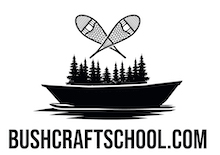


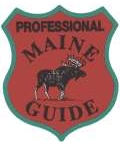
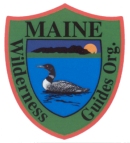
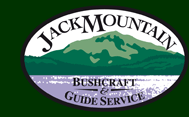
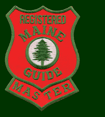
Comments on this entry are closed.